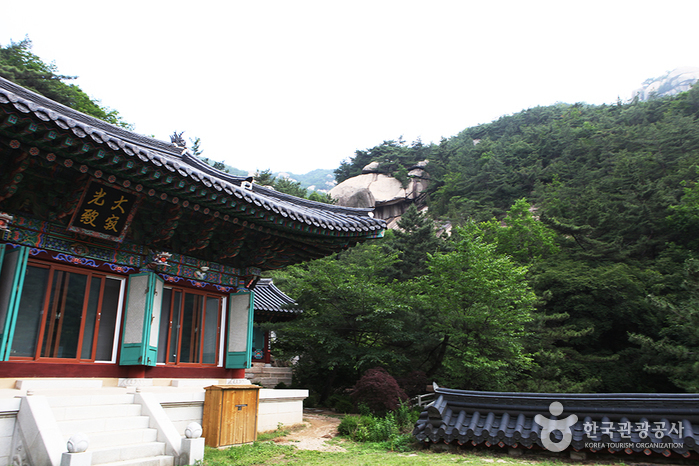Uniqlo - Lotte Cheongnyangni Branch [Tax Refund Shop] (유니클로 롯데청량리)
6.5Km 2024-04-18
B1, 214, Wangsan-ro, Dongdaemun-gu, Seoul
-
Golden Dew - Lotte Cheongnyangni Branch [Tax Refund Shop] (골든듀 롯데청량리)
6.5Km 2024-04-19
1F, 214, Wangsan-ro, Dongdaemun-gu, Seoul
-
Lotte Department Store - Store Cheongnyangni Branch [Tax Refund Shop] (롯데백화점 청량리점)
6.5Km 2024-04-23
1F, 214, Wangsan-ro, Dongdaemun-gu, Seoul
-
Galaxy Lifestyle - Lotte Cheongnyangni Branch [Tax Refund Shop] (갤럭시라이프스타일 롯데 청량리점)
6.5Km 2024-04-19
5F, 214, Wangsan-ro, Dongdaemun-gu, Seoul
-
Beanpole - Lotte Cheongnyangni Branch [Tax Refund Shop] (빈폴 롯데 청량리점)
6.5Km 2024-04-23
5F, 214, Wangsan-ro, Dongdaemun-gu, Seoul
-
J.Estina - Lotte Cheongnyangni Branch [Tax Refund Shop] (제이에스티나 롯데 청량리점)
6.5Km 2024-04-18
214, Wangsan-ro, Dongdaemun-gu, Seoul
-
Adidas - Lotte Cheongnyangni Branch [Tax Refund Shop] (아디다스 롯데 청량리점)
6.5Km 2024-04-19
6F, 214, Wangsan-ro, Dongdaemun-gu, Seoul
-
Lotte Himart - Cheongnyangni Branch [Tax Refund Shop] (롯데하이마트 청량리점)
6.5Km 2024-04-18
214, Wangsan-ro, Dongdaemun-gu, Seoul
-
Seoul Geumseonsa Temple (금선사(서울))
6.5Km 2021-08-17
137, Bibong-gil, Jongno-gu, Seoul
+82-2-395-9911
Geumseonsa Temple is located within Bukhansan National Park, just behind Cheong Wa Da (The Blue House) and Gyeongbokgung Palace. The entrance to the temple is just off the hiking path to Bibong Peak.
After passing Banyajeon Hall, where Buddhist services are held, visitors will see a pine tree over 200 years old, and beyond that, a staircase with 108 steps leading up to Daejeokgwangjeon Hall in the temple's main area. To the right is Samseonggak House and Hongyegyo Bridge over the clear waters flowing down from the mountain.
Additional temple buildings include Mitajeon Hall and Yeonhwadang Hall, built in 2004 by Monk Beopan; and Jeokmukdang Hall, built using traditional construction techniques.
![Uniqlo - Lotte Cheongnyangni Branch [Tax Refund Shop] (유니클로 롯데청량리)](http://tong.visitkorea.or.kr/cms/resource/58/2888858_image2_1.jpg)
![Golden Dew - Lotte Cheongnyangni Branch [Tax Refund Shop] (골든듀 롯데청량리)](http://tong.visitkorea.or.kr/cms/resource/51/2889551_image2_1.jpg)
![Lotte Department Store - Store Cheongnyangni Branch [Tax Refund Shop] (롯데백화점 청량리점)](http://tong.visitkorea.or.kr/cms/resource/07/2889907_image2_1.jpg)
![Galaxy Lifestyle - Lotte Cheongnyangni Branch [Tax Refund Shop] (갤럭시라이프스타일 롯데 청량리점)](http://tong.visitkorea.or.kr/cms/resource/50/2890150_image2_1.jpg)
![Beanpole - Lotte Cheongnyangni Branch [Tax Refund Shop] (빈폴 롯데 청량리점)](http://tong.visitkorea.or.kr/cms/resource/52/2890152_image2_1.jpg)
![J.Estina - Lotte Cheongnyangni Branch [Tax Refund Shop] (제이에스티나 롯데 청량리점)](http://tong.visitkorea.or.kr/cms/resource/89/2890189_image2_1.jpg)
![Adidas - Lotte Cheongnyangni Branch [Tax Refund Shop] (아디다스 롯데 청량리점)](http://tong.visitkorea.or.kr/cms/resource/20/2890220_image2_1.jpg)
![Lotte Himart - Cheongnyangni Branch [Tax Refund Shop] (롯데하이마트 청량리점)](http://tong.visitkorea.or.kr/cms/resource/50/2890450_image2_1.jpg)

 English
English
 한국어
한국어 日本語
日本語 中文(简体)
中文(简体) Deutsch
Deutsch Français
Français Español
Español Русский
Русский